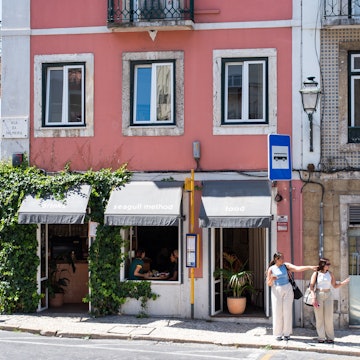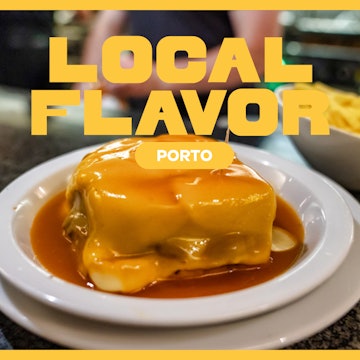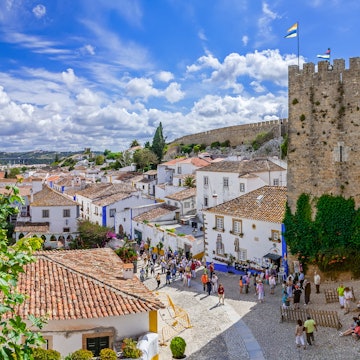

Lisbon is more than just pastel de natas, but they are a delicious place to start © Roman Debree/Shutterstock
Considering the mix of influences of Phoenician, Roman, Muslim, Asian, African, and South American cultures, is there a cuisine we can genuinely call Lisboeta? In short, yes. Sifting through Lisbon’s cultural layers leaves you with a list of common ingredients at the base of the most authentic Lisboan recipes, even if they’ve been peppered over centuries with foreign techniques and seasonings.
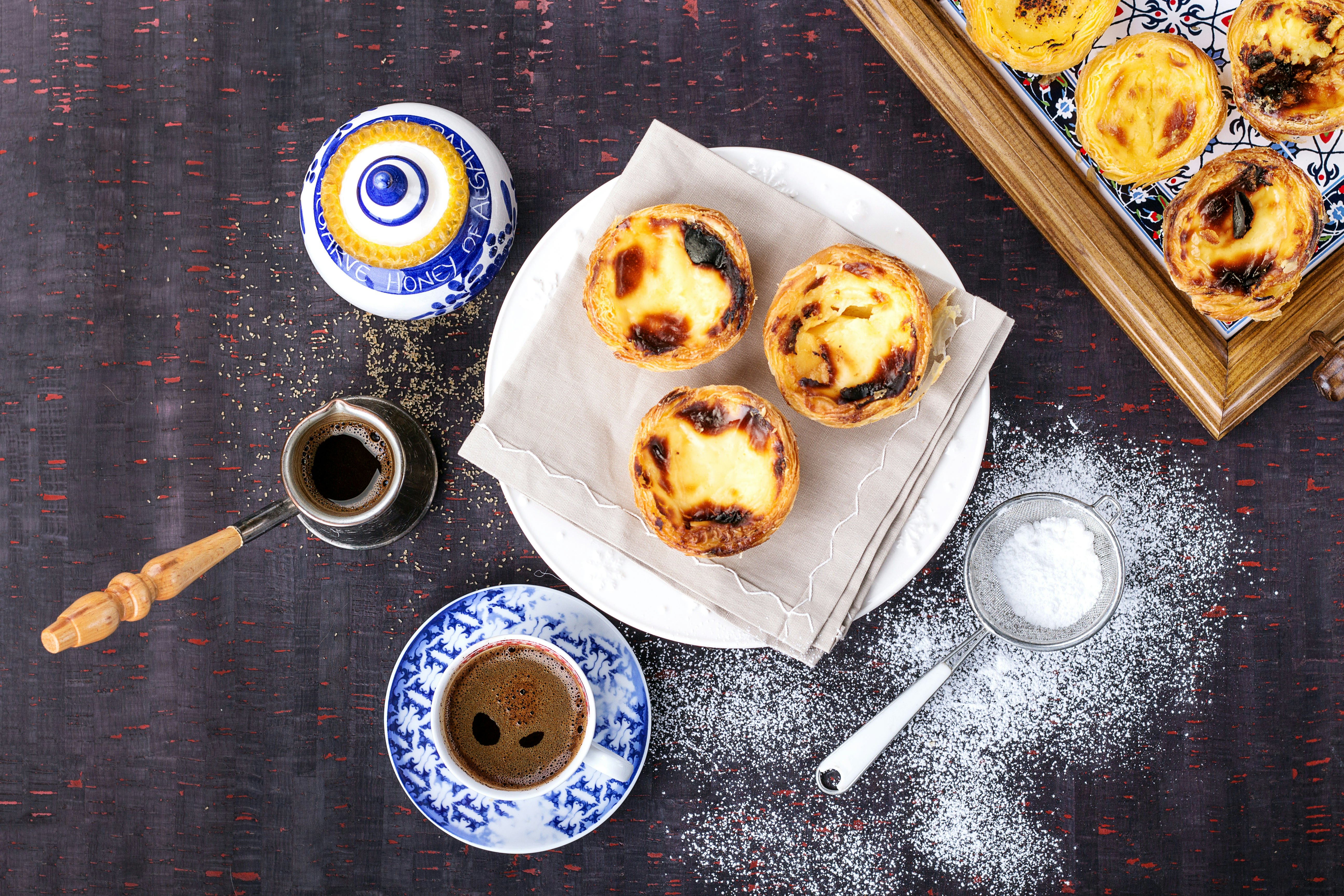
Foodie Lisbon caters to the purists and those with adventurous palates, where family-run tascas share customers with chef-owned restaurants. We dig into some dishes infused with centuries of cultural influences and dish out the places you can find them.
The basics: Lisbon’s food trilogy
Bread and wine have been on Lisboetas’ tables since the Roman empire – two staple foods that crossed the boundaries of class, status, and time. Later, in industrial Lisbon, a bowl of soup was added to Lisbon’s working-class basic diet. In today’s Lisbon, the food trilogy remains. At typical restaurants and other eateries in the city, where workers flock on lunch breaks, most menus include all three in one meal plus the prato do dia (daily special) and a bica (espresso coffee) for less than €10.
Don’t be surprised if servers at traditional restaurants bring a basket of bread even if you didn’t order it. Bread on the table is so embedded in the local culture that this non-complimentary gesture is second nature. The average cost of this traditional fodder is well under €2 and could help avoid any ‘eyes-bigger-than-your-belly’ ordering.
Like this? Try this: Travelling with your tastebuds: how to eat curiously
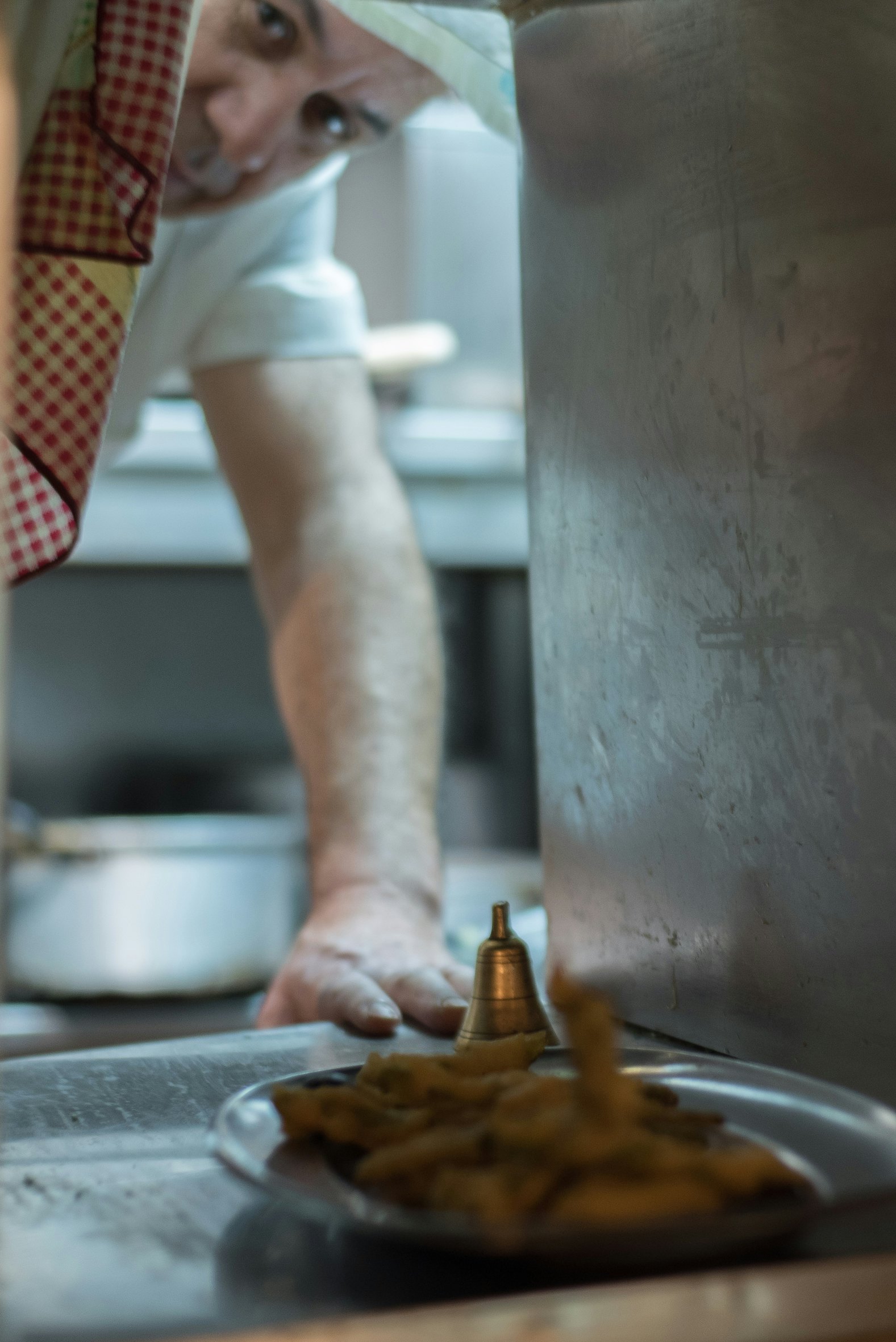
For starters, Peixinhos da horta
A tasty alternative to meat- and fish-based recipes, peixinhos da horta is a nickname given to this battered and deep-fried green beans dish that translates to ‘garden’s little fishes.’ The first mentions of the recipe appeared in the 16th century. Around the same time, by the influence of Portuguese sailors and tradesmen in Japan, it would become a Japanese staple dish called tempura.
The peixinhos da horta is more of a petisco (snack) than a full meal in the Lisboan’s diet, one of the many savory dishes typically shared with friends over a glass of wine or pint of beer. Although plenty of restaurants in Lisbon proudly showcase this item on their menus, the crispiness factor of a good peixinho da horta is of utmost importance. At Varina da Madragoa you can taste a traditional approach to the dish, while at Cantinho do Avillez you’ll indulge in a more contemporary version.
Next up, Iscas
Thin slices of garlicky, fried beef liver may not sound like the most appealing of dishes for out-of-towners, and we’ll admit enjoying a steaming hot plate of iscas is an acquired taste. It’s a must-eat food that’s often left out of the guidebook, despite being one of the most traditional dishes in Lisbon.
Because of their capricious reputation, iscas typically make the daily specials menu or require ordering in advance. Taberna da Rua das Flores and Restaurante Mondego (Tv. do Forno) are two recommended places in Lisbon to try this local dish.
Like this? Try this: On the hop: Lisbon’s exploding craft beer scene
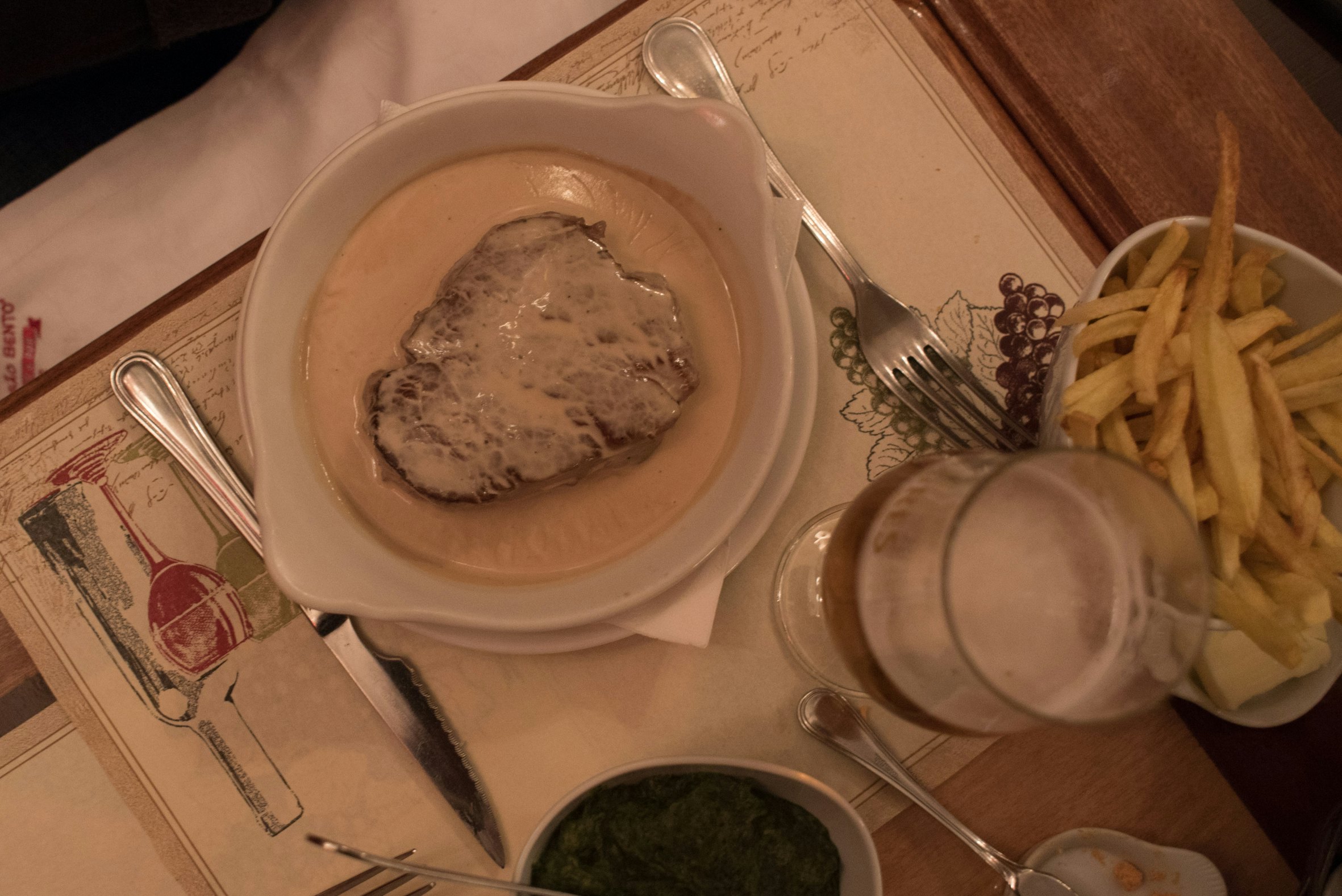
Bife à Café, Marrare style
Named after Italian café owner António Marrare, this steak dish was born at one of his establishments in the Baixa neighborhood. None of his four cafés exists anymore, but his eponymous dish does. The perfect bife à Café is a lightly fried, rare steak swimming in a thick sauce of cream, butter, and meat juices.
There are dozens of similar versions around Lisbon or at least a steak-with-creamy-sauce attempt. Few places stay true to the original recipe, as well as Café de São Bento, a classic restaurant in the Rato neighborhood in business for over 30 years.

Grilled sardines, Lisbon’s loveliest summer dish
In June, as the city prepares for the santos populares festivities, streets in the historic neighborhoods are decorated with wall-to-wall colorful strings, street vendors begin selling pots of fragrant basil (manjericos), and the scent of freshly grilled sardines lets you know you’re hungry even before your stomach takes notice.
The perfect grilled sardine is seasoned with rock salt, cooked to a crispy skin over charcoal, and fits neatly from end to end on a slice of homemade-style bread moistened with the fish’s natural oils and fats. Boiled white potatoes with salad on the side are optional.
Instead of joining the crowds in Alfama, opt for locals’ well-known restaurants like Último Porto in Alcântara, O Tachadas in Santos, or Antiga Casa Marítima (R. Cândido dos Reis 1) in Trafaria, Almada.

After testing all the pasteis de nata, go for the lesser-known custard-filled pastry
Lisbon’s streets are decked with pastelarias (pastry shops/cafés) and confeitarias (confectionaries). And while crisp, custard-filled pasteis de nata are the city’s most famous sweet, don’t miss out on any of the egg-and-sugar-based pastries that fill the cafés’ refrigerated counters by the dozen.
Bom bocado, the other custard-filled pastry frequently overshadowed by tourists’ favorite pastel de nata, doesn’t get half the attention it deserves. Bom bocado is becoming harder to find, but there are still a few places in the city refusing to let it die.
Historical pastry makers Pastelaria Benard still produce and sell the perfect bom bocado: not too sweet, creamy filling on light and crunchy dough, slightly toasted on top. You heard it here first!
Like this? Try this: Sweet Lisbon: the best places to get your sugar fix
The best spots in Lisbon for foodies
Príncipe Real is the contemporary foodie hotspot, with a healthy mix of traditional eateries and chef-owned fusion restaurants like Henrique Sá Pessoa’s Tapisco or Chef Kiko’s A Cevicheria. Bed and breakfast The Independente Suites & Terrace is ideally located between Príncipe Real and bar-hopping neighborhood Bairro Alto and just minutes away from Praça dos Restauradores in the Baixa quarter.
Alfama’s winding streets are flanked by small restaurants and tascas, where live Fado music performances, house wine, and chouriço grilled on the spot abound. Boutique hotel Memmo Alfama in the heart of the neighborhood gives you the full Alfama experience, all the way up to the rooftop bar view of Lisbon’s postcard-perfect terracotta roofs.
Despite the Portuguese cuisine being meat- and fish-heavy, Lisbon’s vegan and vegetarian side has flourished in recent years, with new restaurants like Organi joining the veterans in the business; Jardim dos Sentidos and Os Tibetanos.












